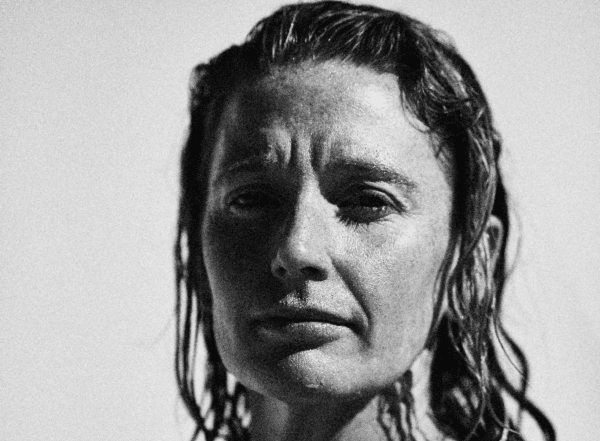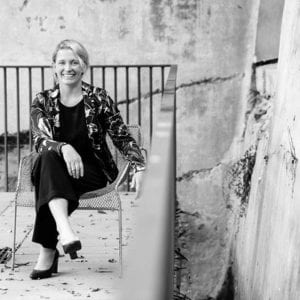Maev’s always had a love for the ocean. She’s a long-time surfer and now takes on challenging open water swims like the English Channel and Catalina Channel. It’s this affinity with ocean that has driven her involvement in #fightforthebight.
Norwegian mining company Equinor wants to drill for oil and gas in the middle of the Great Australian Bight. They want to start drilling at a depth of 2.5 kilometres by the end of 2020. Seismic testing is already underway.
The devastating environmental impacts and the potential for big oils spills have spurred the community into action. Environmentalists, surfers, swimmers, ocean lovers and fishermen are just some of the Australians who have joined the #fightforthebight campaign.
As Maev explains, to date, over 31,000 people from the community have submitted comments on the Equinor proposal. Momentum in the community is clearly building.
“The #fightforthebight campaign has gained momentum. Norwegian politicians have raised the campaign in their parliament, leading scientific experts have voiced their concerns and community opposition has forced Equinor to publicly defend its plans,” Maev told Women’s Agenda.
“Taking on environmental issues is not easy but with constant pressure, they can and will be won.”
Below, Maev tells Women’s Agenda about the psychological challenges of treacherous open water swimming and her involvement in #fightforthebight and the Surfrider Foundation. She urges no matter how small, any risk is too great when it comes to oil spills and climate change.
What is the #fightforthebight campaign and why did you decide to get involved?
Thousands of surfers and ocean lovers are campaigning along Australia’s coastline in opposition to planned oil drilling in the Great Australian Bight by Norwegian mining company Equinor. Over 31,000 people have submitted comments on the proposal, which are currently under review by the National Offshore Petroleum Safety and Environmental Management Authority (NOPSEMA). The Norwegian Government has a 67% majority stake in Equinor.
After seeing the significant impact of the Deepwater Horizon (Gulf of Mexico) oil spill in 2010, I wanted to contribute to this campaign. It was the largest marine oil spill in history, resulting from an explosion on the oil rig. It costs lives; caused physical and mental health issues; affected industries that residents depended on; damaged economic prospects in the region; and left irreversible damage to marine and coastal ecosystems. Previously, I’ve supported campaigns opposing coal and sand mining. This campaign gave an opportunity support those opposing the oil and gas industry.
Oil giants, BP and Chevron, have both withdrawn their plans to drill for oil in the Bight. However, Equinor plans to start drilling for oil at a depth of almost 2.5 km by the end of 2020, with seismic testing currently underway. Equinor has stated that the risk of an oil spill in the Bight is small. I believe that even a small risk is too great, particularly with our current understanding of carbon costs and climate change.
What has your involvement with the #fightforthebight campaign been like?
While the obvious risks of drilling for oil in this region are small or large oil spills, they are not the only risks that are concerning. The plan threatens a fragile marine ecosystem of international significance and puts businesses, livelihoods, tourism and culture at risk. It is significantly damaging to the Mirning culture, a community that has lived across the 600km coastline for thousands of years.
The campaign faces daily challenges. It’s important to have a good understanding of the plan to ensure you are stating facts and not inducing fear in the community. Keeping up to date on current programs, research and the role health, science and environmental organisations play in these issues is critical. It also requires a strong, united, approach by these organisations and the community to tackle the financial, political, health and environmental challenges.
Why are community events, such as the ‘paddle outs’ to #fightforthebight, important and what have they achieved so far?
Surfrider Foundation Australia and the Great Australian Bight Alliance are holding ‘paddle outs’ in opposition to the proposal along Australia’s coastline. The campaign has mobilised thousands of surfers, ocean lovers, environmentalists and the wider community. It has brought our communities together in support of the Bight, a place of environmental and cultural significance, and has started an important conversation about the risks associated with drilling for oil and mining trends across Australia.
The #fightforthebight campaign has gained momentum. Norwegian politicians have raised the campaign in their parliament, leading scientific experts have voiced their concerns and community opposition has forced Equinor to publicly defend its plans. Similar campaigns opposing offshore oil drilling in the US have united with the #fightforthebight campaign and the World Surf League has also lent their support. With an impending federal election, our major political parties have not responded to increasing public sentiment against the controversial proposal, despite both parties promoting their climate policies.
You grew up as a surfer and got involved in swimming later. What was it about swimming that enticed you to the sport?
After surfing and body boarding for over 15 years, I began open water swimming while living in Cambridge as there was no surf. Previously using swimming to improve my fitness and surfing skills, it very quickly developed into a new passion. Swimming invited competition at previously unseen beaches, rivers and lakes, and offered opportunities to travel throughout Australia, the UK and US. As much as I like swimming, surfing will always be my first love.
What has been your most memorable long-distance swimming feat to date?
Most assume the English Channel or Catalina Channel because of their distance, challenges and historical significance. However, it was taking on the 20km fresh water swim across Lake Argyle in the Kimberley that is most memorable. My Dad, who can’t swim, got his boat licence and drove across the country in his ute with my gear in tow. For him it was a big gamble – he had never seen me surf or swim before and hadn’t been on a support boat before.
I remember being physically but not psychologically prepared for the race. It was painful swimming through unseasonable torrential storms and headwinds. We made it to the finish with just minutes to spare before the required completion time. Six swimmers took part in the 20km race, with five making it to the finish just in time. The swim officials handed me champagne at the finish and I turned around to see my Dad cry with pride. He’s travelled across the world and supported me on every major swim since.
Can you take us through some of the physical and mental challenges that open water, long distance swimming brings? How do you work to overcome these challenges?
Like any sport, distance swimming takes commitment, courage, determination and strength. It isn’t an individual sport — you won’t get anywhere without your support crew. They are critical to any swim attempt and they have their own physical and psychological challenges to overcome. It’s their journey too and you can’t attempt any of these swims without their commitment and courage.
You and your support crew need to be gracious in success and defeat. You are subject to the strength and force of the water and weather, and ultimately, that decides whether you finish or not. It’s unpredictable and humbling — that’s the beauty of the sport.
What does your role as an ambassador for Surfrider Foundation Australia involve?
Surfing and swimming have given me amazing opportunities to be an ambassador for a number of international organisations. I’m proud to support Surfrider Foundation Australia and dedicate time to represent the organisation at events, increase engagement and awareness, and provide advocacy, creative and design advise for their campaigns.
They are an incredible, diverse, group of volunteers, who are dedicated to protecting our oceans, waves and beaches through conservation, activism, research and education. Taking on environmental issues is not easy but with constant pressure, they can and will be won.
SFA Maev ambassador from Surfrider Foundation Australia on Vimeo.
You’ve been accepted into Al Gore’s Climate Reality Leadership Program. Congratulations! What new skills are you hoping to take away from the training program?
Having provided support for #fightforthebight, Save Our Sands and #stopadani mining campaigns, I have gained a strong interest in the environmental and public health impact of mining, particularly its impact on physical and mental health, carbon costs and climate change.
In partnership with governments and decision-makers, I aim to help design and implement alternative, sustainable solutions. Learning from former Vice President Al Gore and world-renowned scientists will be an incredible opportunity. I will gain a greater understanding of how to build a network, shape public opinion, influence policy and inspire communities.




